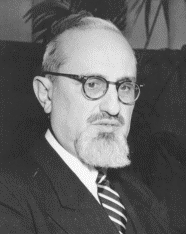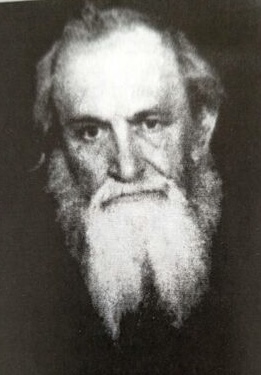Biography
Rabbi Rakeffet attended Bnei Akiva as a youth. Meir Kahane was one of his madrichim (counselors). Rabbi Rakeffet met his future wife Malkah while giving a shiur at Bnei Akiva. [2]
Rabbi Rakeffet started his career in 1961 as a pulpit rabbi at Lower Merion Synagogue in Bala Cynwyd, Pennsylvania. [3] In 1962, he moved from Lower Merion to become the spiritual leader of the first Orthodox synagogue in suburban Essex County, Congregation Beth Ephraim of Maplewood and South Orange, New Jersey. During that time, he also served as a high school rebbe at the Manhattan Talmudical Academy of Yeshiva University. In 1969, he moved to Israel and worked as a Staff Editor for the Encyclopaedia Judaica. [4] He also wrote numerous entries, including the one for Rabbi Joseph Dov Soloveitchik [5] and Rabbi Eliezer Silver. [6]
Upon the conclusion of the Encyclopaedia Judaica project, Rabbi Rakeffet pursued his love of teaching. He was a pioneer in Torah education for diaspora students in Israel. He was a member of the initial 1969 faculty of Jerusalem Torah College (BMT) and taught there for twenty years. He also taught at Machon Gold and Michlalah. He was also a founding faculty member at Midreshet Moriah, an advanced Torah study program for women. [7]
By 1976, BMT had outgrown its campus and was exploring options to construct a new home. At that time, Joseph Gruss had completed construction on a Jerusalem campus for Rabbi Joseph Soloveitchik and Yeshiva University. Unfortunately, Rabbi Soloveitchik declined the invitation to teach there. Gruss then considered other options for the campus, such as giving it to the Technion or to the David Yellin College of Education. Rabbi Moshe Horowitz, the director of BMT, asked Rabbi Rakeffet to speak with Mr. Gruss about obtaining the campus for BMT. Rabbi Rakeffet impressed upon Mr. Gruss that BMT would propagate Rabbi Soloveitchik’s teachings and heritage to future generations in the Jewish homeland. Mr. Gruss then agreed to give the campus to BMT and to Yeshiva University. BMT moved to the campus and YU started the Gruss Kollel in the fall of 1976. [8] Rabbi Rakeffet joined the Gruss Kollel faculty [9] and recruited Dr. Nechama Leibowitz to teach there as well.
Rabbi Rakeffet served in the Israel Defense Forces until the maximum allowable age. He served in Lebanon during the 1982 Lebanon War. [10]
In 1980, he was recruited by Aryeh Kroll to join the Mossad's clandestine Nativ operation to teach Torah in the Soviet Union. [11] Rabbi Rakeffet visited the Soviet Union in 1981, 1985, and 1989 together with his wife Malkah, and recruited 200 others to also visit. His initial visit motivated him to help found the Shvut Ami organization.
After the Iron Curtain fell, Rabbi Rakeffet followed his daughter into focusing on a new cause, the International Coalition of Missing Israeli Soldiers. At first, he spoke at fund-raising events. He soon became close with the Baumels and participated in evaluating the various leads they had. Unfortunately, no tangible outcome was realized. He then conceived the idea of using the standards for permitting agunot to marry for these cases. If the evidence indicated that the soldiers were no longer alive, the families might realize a sense of closure and the Israeli government might more easily negotiate with the enemies who held the bodies. Rabbi Rakeffet's idea was accepted by the Israel Defense Forces. In 2001, he formed a beit din which was given the necessary clearance to analyze all available evidence. [12] After 2.5 years, the beit din concluded the soldiers had died. [13] Rabbi Rakeffet's halakhic innovation of "Presumed Dead; Place of Burial Unknown" (מקל'ן), is currently used by the IDF to declare a missing soldier "Presumed Dead" in similar cases. [14]
Rabbi Rakeffet felt strongly that a documentary should be made about Rabbi Joseph B. Soloveitchik. After much effort, he found Ethan Isenberg to produce the film, and a donor to subsidize it. The documentary "The Lonely Man of Faith: The Life and Legacy of Rabbi Joseph B. Soloveitchik" was first shown in November 2006. [15] [16]
Rabbi Rakeffet finished his 10-year effort of writing his personal scholarly memoir, "From Washington Avenue to Washington Street", with its publication in 2011. Published by the OU Press in conjunction with Gefen Publishing House. [9] It was his seventh published volume. [17] [18] One critic hailed the memoirs: "Although serious to the core, his wonderful sense of humor shines in this inspiring life story of a true intellectual who continues to devote his talents to the Jewish people and the State of Israel." [19]
In June 2016, Rakafot Aharon Vol 3 was published by Shvut Ami. Rabbi Dr. Yaakov S. Weinstein of East Brunswick, NJ compiled and annotated it based on contemporary Halachic topics presented by Rabbi Rakeffet between 1998 – 2002 in his advanced shiurim given at YU's Gruss Kollel. The topics include: The classic Agunah, Mamzerut and Artificial Insemination.
In July 2019, Rakafot Aharon Vol 4 was published, also by Shvut Ami. The first section on Hilkhot Kiddushin was compiled by Rabbi Dr. Weinstein, based on Rabbi Rakeffet's shiurim. The second section on the Russian Saga consists of material on Rabbi and Mrs. Rakffet's visits to the Soviet Union while working for the Mossad during the 1980s. The third section includes a portion of Rakeffet's published scholarship since 1993. The fourth section contains unique documents and pictures, including the identification of every student in a famous picture of Rabbi Joseph Soloveitchik's 1960 classroom.
In July 2023, Rabbi Rakeffet published "Theodore Herzl and Contemporary Zionism in the Context of Joseph and His Brothers". [20] This essay was originally published in Maaseh Harav by Rabbi Mendi Gopin which commemorated Rabbi Soloveitchik’s 120th birthday and 30th Yahrtzeit. Rabbi Rakeffet expands upon the theme in Rabbi Soloveitchik’s lecture ‘Joseph and His Brothers’, which recognizes the need for the Mizrachi to work with secular Jews to build the State of Israel. Rabbi Rakeffet quotes sources which encourage the appreciation and recognition by religious Jews of Theodore Herzl’s dedication and accomplishments to create a Jewish state. Furthermore, he explores the contemporary meaning of ‘Daat Torah’. Per Rabbi Teichtal, “The rabbis must constantly evaluate their outlook on non-Halakhic issues in accordance with reality and the aftereffects of their viewpoints.”
In October 2023, Rabbi Rakeffet published "Rabbinic Authority and Leadership on the Contemporary Scene". [21] This essay explores the origins of Daas Torah, its impact on Israeli society, and how various rabbis dealt with this approach to Rabbinic authority.

Joseph Ber Soloveitchik was a major American Orthodox rabbi, Talmudist, and modern Jewish philosopher. He was a scion of the Lithuanian Jewish Soloveitchik rabbinic dynasty.

Aharon Kotler was an Orthodox Jewish rabbi and a prominent leader of Orthodox Judaism in Lithuania and the United States; the latter being where he founded Beth Medrash Govoha in Lakewood Township, New Jersey.

Yeshiva Rabbi Chaim Berlin or Yeshivas Rabbeinu Chaim Berlin is an American Haredi Lithuanian-type boys' and men's yeshiva in Brooklyn, New York. The school's divisions include a preschool, a yeshiva ketana, a mesivta, a college-level beth midrash, and Kollel Gur Aryeh, its post-graduate kollel.
Rosh yeshiva is the title given to the dean of a yeshiva, a Jewish educational institution that focuses on the study of traditional religious texts, primarily the Talmud and the Torah, and halakha.

Aharon Lichtenstein was an Orthodox rabbi and rosh yeshiva who was an authority in Jewish law (Halakha).

Moshe Soloveichik was an Orthodox rabbi. He was Rosh Yeshiva at the Rabbi Isaac Elchanan Theological Seminary of Yeshiva University.

Yosef Chaim Shneur Kotler was an Ashkenazi Orthodox rabbi from the Lithuanian movement and rosh yeshiva of Beth Medrash Govoha in Lakewood, New Jersey from 1962 to 1982. During his tenure, he developed the Lithuanian-style, Haredi but non-Hasidic yeshiva into the largest post-graduate Torah institution in the world. He also established Lakewood-style kollels in 30 cities, and pioneered the establishment of community kollels in which Torah scholars study during the morning and afternoon hours and engage in community outreach during the evenings. Upon his death, he had served as the Lakewood rosh yeshiva for exactly the same amount of time as had his father, Rabbi Aharon Kotler, the founding rosh yeshiva of Beth Medrash Govoha: nineteen years, seven months, and one day.

HaRav Mordechai Yitzchak HaLevi Willig is an Orthodox rabbi and rosh yeshiva at Yeshiva University in Washington Heights, Manhattan. He is often known to his students as the Ramu, which is the transliteration of the acronym of the Hebrew letters Reish, Mem, and Vav, which spell out the first letters of Willig's title and name.

Michael Rosensweig is a Rosh Yeshiva at the Rabbi Isaac Elchanan Theological Seminary of Yeshiva University and the Rosh Kollel of the Beren Kollel Elyon.
Moshe Meiselman is an American-born Orthodox rabbi and rosh yeshiva (dean) of Yeshiva Toras Moshe in Jerusalem, which he established in 1982. He also founded and served as principal of Yeshiva University of Los Angeles (YULA) from 1977 to 1982. He is a descendant of the Lithuanian Jewish Soloveitchik rabbinic dynasty.

Yeshivat Har Etzion, commonly known in English as "Gush" and in Hebrew as "Yeshivat HaGush", is a hesder yeshiva located in Alon Shvut, in Gush Etzion. It is considered one of the leading institutions of advanced Torah study in the world and with a student body of roughly 480, it is one of the largest hesder yeshivot in the West Bank.

Eliyahu Halevi Feinstein, also known as Reb Elye Pruzhaner,, was a leading Litvak rabbinic authority of his time.

Mosheh Lichtenstein is a co-rosh yeshiva of Yeshivat Har Etzion located in Alon Shvut. He is the eldest son of Rabbi Aharon Lichtenstein and Dr. Tovah Soloveitchik.
Itamar Rosensweig is a rabbi and maggid shiur at Yeshiva University in New York City and a dayan at the Beth Din of America, where he also serves as the editor of Jewishprudence: Thoughts on Jewish Law and Beth Din Jurisprudence. Rabbi Rosensweig is also the Rabbi at The Merion Shtiebel in Merion Station, Pennsylvania, and teaches Jewish Business Law and Ethics at YU's Sy Syms School of Business. Previously, he taught an advanced Talmud shiur at Columbia University's Kraft Center, and presently serves as the maggid shiur at the University of Pennsylvania Hillel. He is the son of Rabbi Michael Rosensweig, and grandson of Yaffa Eliach.

Solomon Sharfman was a rabbi of Orthodox Jewry who built the Flatbush Modern Orthodox Jewish community in the mid-1900s.

David Hirsch is an American rabbi. He serves as rosh yeshiva at the Rabbi Isaac Elchanan Theological Seminary of Yeshiva University in New York City. He is the spiritual leader and rav of Kehillas Bais Yosef in Passaic, New Jersey.

Yeshivas Itri is an Orthodox yeshiva in southeast Jerusalem. Founded in 1968 by Rabbi Mordechai Elefant, the yeshiva has several branches in Israel and the United States, and spawned several educational programs for Diaspora Jews.

Moshe Aharon Poleyeff was an American rabbi, teaching at Yeshiva University (YU) in New York where he was a Rosh Yeshiva for over 45 years, training generations of rabbis, including Mordechai Gifter.

Rabbi Reuven Katz was a rabbi in Russia, the United States, and Israel. Serving at first in several Russian communities and then in Bayonne, New Jersey, for the last thirty years of his life he served as chief rabbi of Petah Tikvah and as the rosh yeshiva of the city's Lomza Yeshiva.
















